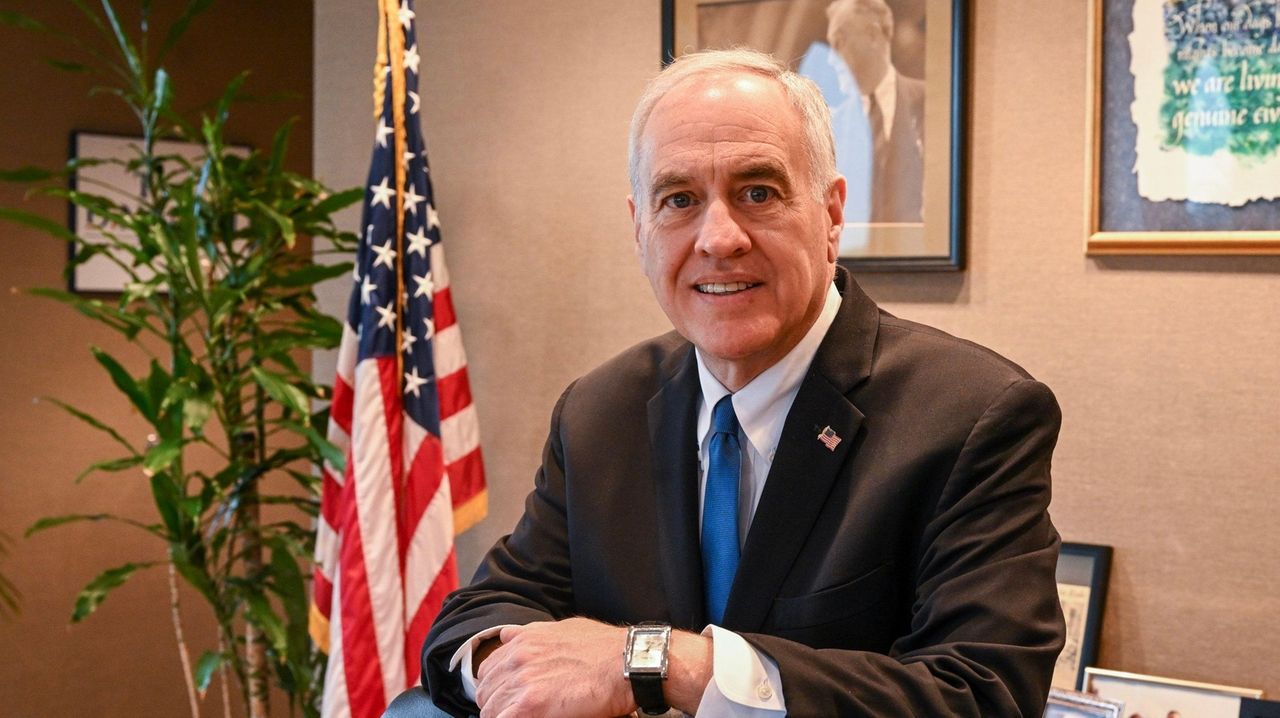The value of the New York state pension fund shrank in the year ended March 31 as the stock market fell, which could lead to higher tax revenues as state and local governments replenish the funds.
State Comptroller Thomas P. DiNapoli, the sole trustee of the public retirement fund, which is now valued at $248.5 billion, said the investment return was -4.14%. For the year ending March 31, 2022, it is valued at $272.1 billion.
Still, DiNapoli (D-Great Neck Plaza) said negative investment returns would not jeopardize the welfare of 1.2 million government employees, retirees and their beneficiaries. They “can rest assured that their superannuation is secure”, he said.
The investment loss was the largest since a 26.4 percent loss in 2009 during the Great Recession, records show. The fund has a long-term return of 5.9%.
In 2022, the return is 9.51%; in 2021 it is 33.55%, and in 2020 it is -2.68%.
Last year, the pension fund distributed checks totaling $15.4 billion to nearly 515,000 retirees and their beneficiaries in New York state and elsewhere. On Long Island, more than 64,800 people received donations totaling $2.5 billion.
The mutual retirement fund is one of the largest funds of its kind, along with funds in California and New York City.
“Investors have struggled in recent months,” DiNapoli said, adding that more than 44% of the fund’s assets are invested in volatile stocks.
The value of the fund’s U.S. stock portfolio fell 8.29 percent year-over-year, compared with an 8.58 percent drop in the nation’s largest publicly traded Russell 3000 index. The international equity portfolio fell 4.85%.
The impact of state and local governments on employer contributions will not be known for several weeks. The new contribution rates, which are usually announced in early September, could trigger property tax increases.
In 2021, the village of Nissequogue will raise taxes for the first time in four years, citing higher pension contribution rates for employees in the village, among other reasons.
For the year ending March 31, 2024, the employee retirement system rate increases from 11.6% to 13.1% of wages, and the police and fire retirement system rate increases from 27% to 27.8% of wages.
Investment gains and losses are only one factor in setting contribution rates, DiNapoli said. Others include wage growth, inflation, retirement age and mortality. State constitutions require pension funds to be fully funded at all times.
Still, EJ McMahon, a senior fellow at the Imperial Center for Public Policy, a conservative think tank in Albany, said last year’s negative investment returns “could lead to taxpayer-funded … increases in employer contributions starting in 2024.”
The annual contribution rate is no longer based on the fund’s five-year return, which has lessened the impact of a bad year, he said. The fund “has returned just 5% on average over the past two years, so employer contributions will almost certainly increase next year, at least slightly.”
DiNapoli spokesman Matthew Sweeney (Matthew Sweeney) responded, “When investment returns are not on target, there will be some upward pressure on interest rates. Sure.” .

